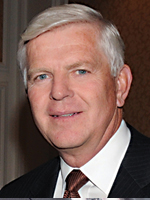The One-Day Jury Trial
California’s effort to preserve the 7th Amendment
The ability to secure a courtroom to try a jury trial is becoming increasingly difficult for civil cases in many jurisdictions. A recent survey of 22 states found that civil jury trials in their courts have decreased by more than 30%. The decline is worse in Federal courts. The reasons for the decline are cost and delay, coupled with Court budget cuts.
In an effort to make the state courts more accessible for litigants in smaller, less-complex cases in California, the legislature passed the “Expedited Jury Trial Program” (EJT). It was fashioned after a similar program instituted in South Carolina in the late 1990s. The Code of Civil Procedure sections 630.01-10 and California Rules of Court, rules 3.1545 through 3.1552 became law on January 3, 2011. Since enactment, the lawyers, juries, and judges who have participated in EJTs have universally been pleased with the program and the expeditious handling of the trials, without compromising the rights of the parties in the process.
How it works
All the lawyers and parties must agree to the EJT. Everyone must sign a “Consent Order,” including insurance company representatives, which essentially operates as a stipulation spelling out the mandatory terms of the EJT, along with any additional agreements between the parties. The parties can enter into high/low agreements, stipulations regarding introduction of witness statements, medical records/reports, and expert testimony via declaration.
There are no more than eight jurors, although the parties can stipulate to less. Six out of eight are needed to reach a verdict. Each side has three peremptory challenges. There are no alternates. Approximately one hour is devoted to voir dire, including the questions asked by the judge. A one-page juror questionnaire can be utilized before voir dire begins. Each side has three hours to present their case. That includes opening, closing, and cross-examination of adverse witnesses. The judge will serve as the time-keeper.
The jury can deliberate as long as needed. The time spent deliberating is not considered part of the six hours provided to present the case. The result will be binding and both sides waive their rights to appeal.
The program is designed to be cost effective. The parties are free to stipulate to almost anything and are encouraged to simplify presentation of evidence.
History
First, a short synopsis about the history and origin of the EJT is probably in order to alleviate the suspicions that it was drafted for the advantage of the plaintiff or defense bar and to the disadvantage of the other.
Over the past several years concerns have been raised from all sides of the counsel table by various leaders and observers of the jury trial system that the expense of a jury trial was jeopardizing the right to a jury trial in civil cases and in some cases denying access to the courts. To address this growing concern, the Chief Justice and the Administrative Office of the Courts formed a working group, consisting of representatives from the plaintiff’s bar, defense bar, insurance industry, business organizations and consumer organizations. The EJT received inspiration from similar programs currently being used successfully in New York and South Carolina. With input from all these diverse groups the EJT procedures and rules were drafted.
In the interest of brevity, a short summary of the EJT is provided below. The complete procedures of an Expedited Jury Trial are found in sections 630.01-630.10 of the Code of Civil Procedure, while the implementing rules are found in CRC 3.1545 – 3.1552.
Pretrial procedures
Participation in an EJT is voluntary. The Parties must consent to participate by executing a Consent Order signed by all parties and counsel. (Code Civ. Proc. § 630.03.) The consent order must include representations that the parties and their insurers have been informed of the applicable rules and procedures through review of the Judicial Council information sheet. (Id., § 630.03(a), (e).)
The Consent Order must contain five disclosures to which the parties give their informed consent: 1. Waiver of right to appeal and post trial motions; 2. a limit of three hours to present their case; 3. a jury of 8 or fewer jurors; 4. a limit of three peremptory challenges; and 5. an agreement that the trial will be conducted under the act unless expressly agreed otherwise. (Code Civ. Proc. § 630.03(e).)
The Consent Order is required to be submitted to the court 30 days before the established trial date. The court can grant leave to file it later. (Rule 3.1547(a).) Once the completed Consent Order is signed by all and filed with the court it is binding, unless all parties agree to withdraw the Order. As a practical matter trial courts are free to allow the Consent Order to be filed with the court on the date set for trial. This last- minute stipulation, although permissible, is not recommended due to the preparation necessary to present an expedited trial. Pretrial preparation is necessary also to allow for compliance with and completion of a 25-day evidence exchange and a 15-day pretrial conference with the trial judge. (Rule 3.1548(b).)
Overlooked by all of this is the preparation of jury instructions. It is highly recommended that counsel be prepared with their jury instructions before the trial date. A case of this length does not afford the opportunity to spend a significant amount for time on jury instructions once the jury is selected. Jury instructions will need to be finalized before the trial begins.
Trial procedures
Voir dire is limited to 15 minutes per side. (Rule 3.1549.) Each side is given 3 hours to present their case. (Rule 3.1550.) This three-hour period includes opening statements. The time spent on cross-examination will count toward the parties’ 3 hour allotment. Trial judges will fulfill the role as time keepers in an EJT. Stipulations on admissibility of evidence are encouraged. The use of declarations in lieu of live testimony, seeking to streamline the process and limiting the number of live witnesses, is also encouraged. (Rule 3.1550.) The traditional rules of evidence apply unless the parties stipulate otherwise. (Code Civ Proc. § 630.06(a).)
Innovation in the presentation of the evidence to streamline the trial is encouraged. However, do not rely on innovation at the expense of your trial preparation. In some respects, the limited time allotted for an EJT requires a greater attention to preparation because the shortened trial time will require more focused arguments and questioning, direct and cross, to optimize trial counsel’s time.
An EJT is not limited to any type of case or amount of damages claimed. An EJT is a procedure that can be applied to a wide range of trials, not just the small- dollar cases where the litigation costs make it impractical to litigate. For instance, an EJT would be very adaptable to a single-issue trial where resolution of a single issue would result in settlement of the larger case.
Four keys to EJT
Four key words can be used to summarize the Expedited Jury Trial.
Flexibility — As long as the Consent Order contains agreement on the five mandatory requirements the EJT trial counsel are free to fashion the trial to suit their needs for the case being tried. High/low agreements may be agreed upon.
Certainty — Expedited Trials are certain to get a courtroom on the date they are set for trial. (At least in the initial stages of implementing the Expedited rules in Orange County, the EJT will be tried before a judge.) The reality of calendar management practically dictates that an Expedited Trial will be tried before any other case on calendar that day. The trial judge can easily slide a one day jury trial ahead of any trials with longer trial estimates answering ready on that day. Even if the trial court is already engaged in trial, finding a home for a one day jury trial will be a certainty. Additionally, the jury verdict is binding.
Finality — Appeal is waived. Except for certain well defined exceptions, “post trial motions” are not allowed. (Code Civ. Proc. §§ 630.01, 630.08.)
Savings — You can do the numbers but the cost savings is obvious.
Conclusion
Our justice system cannot work if the jury trials are too expensive and time-consuming to conduct. The EJT program has been designed to address the issues of cost and delay directly so that the right of access to a jury trial will be preserved. In writing this article, it is our hope that other ABOTA members and judges throughout the country will initiate efforts to enact a similar model for their courts. You can email the authors (see below) for copies of the Consent Order and/or Juror Questionnaire.
This article was originally published in Voir Dire Magazine. For additional information on the subject, see “Post-trial motions in expedited jury trials - A look at your limited options if an expedited trial doesn’t work out as expected.” Hon. Alex Ricciardulli, Los Angeles Superior Court. Advocate Magazine – August 2013.
Hon. Steven Perk

Hon. Steven Perk is the supervising judge of the civil panel for the Orange County Superior Court. He has been a strong proponent of the Expedited Jury Program having spoken to trial lawyer associations and local ABOTA chapters in Southern California. sperk@occourts.org. Photo of Judge Perk courtesy of Laurel Hungerford.
Eric V. Traut

Eric V. Traut is a partner in The Traut Firm and is Past President of the Orange County Chapter of ABOTA. Eric has tried 95 jury trials and conducted the first Expedited Trial in Riverside County. Like Judge Perk, he has spoken to several trial lawyer organizations to promote the EJT program. eric@trautfirm.com.
Copyright ©
2026
by the author.
For reprint permission, contact the publisher: Advocate Magazine
